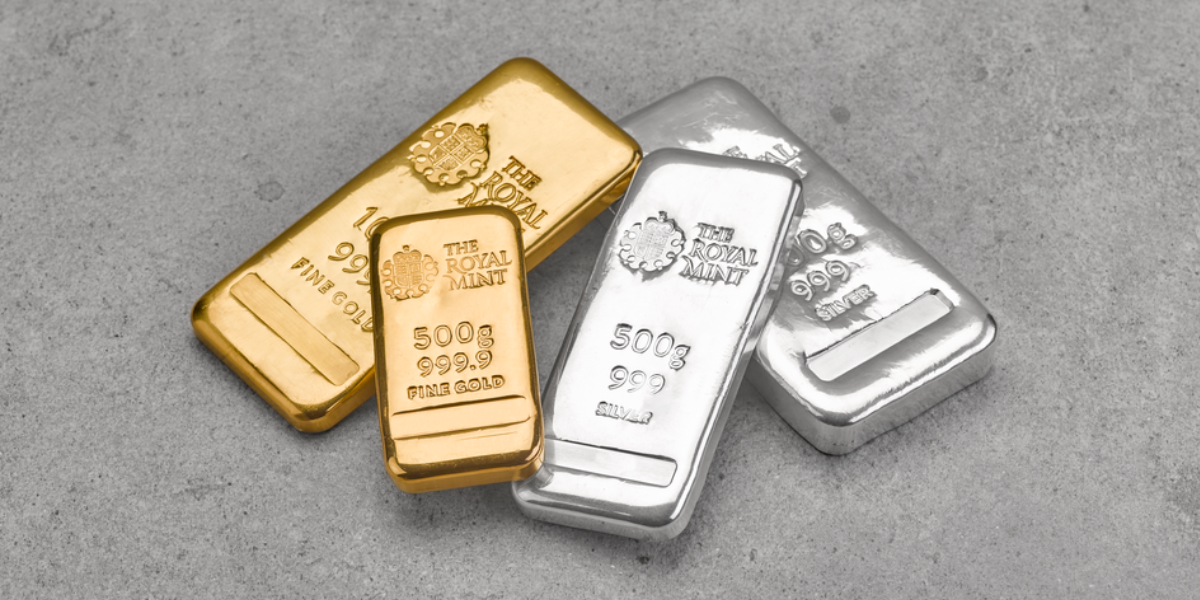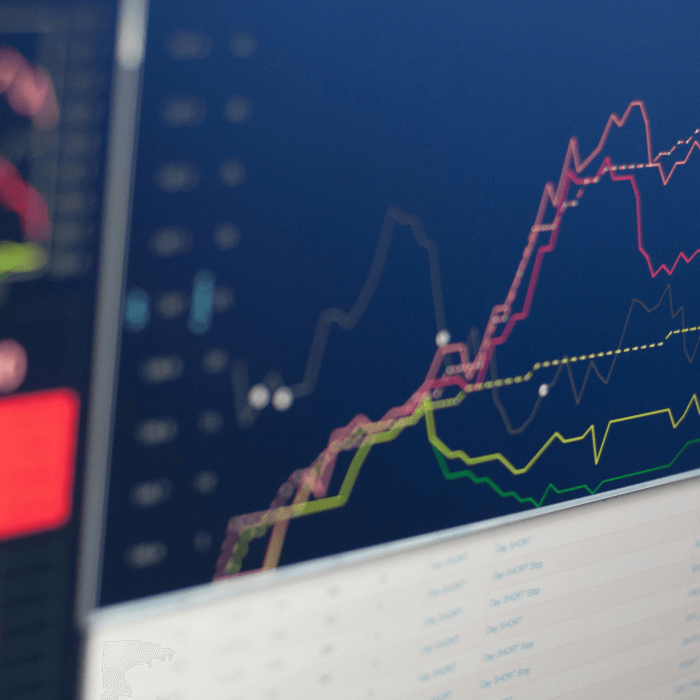
Gold and silver have long been treasured for their beauty, rarity and intrinsic value, making them popular investment choices throughout history. Part of the rationale behind their investment appeal is that they can offer a hedge against inflation and economic uncertainty, often performing well when other asset classes fall in value. For many looking to invest in precious metals, one of the first questions is the choice between gold or silver and as such, understanding their dynamics is crucial.
One important concept in the precious metals market is the gold-silver ratio. In simple terms, this measures the relative value of gold to silver, indicating how many ounces of silver are needed to purchase one ounce of gold. It is important as it serves as a key indicator of market trends and investor sentiment, offering valuable insight into the potential trajectory of both metals.
This article aims to demystify the gold-silver ratio, explaining its significance, historical context and how it can be effectively utilised to form part of your investment strategy. Whether you are new to precious metal investing or are seeking to enhance your knowledge and portfolio further, understanding the gold-silver ratio can help you make more informed decisions and to optimise your approach.
What is the Gold-Silver ratio?
The gold-silver ratio is a simple, yet powerful metric used to compare the relative values of gold and silver. It indicates the number of ounces of silver needed to purchase one ounce of gold. For example, if the price of gold was £2,000 per ounce and the price of silver was £20 per ounce, the ratio would be 100:1. This means you can purchase 100 ounces of silver for the same price as one ounce of gold.
History of the Gold-Silver ratio
The ratio is an interesting market indicator, but also intriguing is how it has been calculated and implemented over time. Historically, the ratio was often fixed by official bodies and governments, with some suggesting it was first officially set during the Roman Empire.
In more recent years, the United States Coinage Act of 1792 established a ratio of 15:1 and later 16:1 as part of the 1834 Coinage Act. This set the mint price for silver at a level below its international market price, effectively raising the price of gold and lowering the price of silver. This correction was an effort to restore gold circulation because, by 1834, the US had experienced outflows of gold, largely because the 15:1 ratio had overvalued silver. This made gold more expensive in the U.S., compared to international markets, causing gold coins to be hoarded or exported.
Although historically the ratio has been determined and set officially, in modern times the ratio is determined by the free market and can fluctuate widely, based on supply, demand, economic conditions and general investor sentiment.
Why the Gold-Silver ratio matters
The gold-silver ratio is a valuable market indicator that reflects the relative performance of gold and silver. When the ratio is high, it suggests that gold is outperforming silver, broadly indicating that silver might be undervalued compared to gold. Conversely, a low ratio implies that silver is performing better, suggesting that gold may be undervalued. Investors can use this ratio to gauge market conditions and sentiment, helping them to identify potential buying or selling opportunities.
Including the ratio in your investment strategy
Using the ratio as part of your investment strategy can help you to make more informed decisions and identify opportunities to buy or sell. When the ratio is high, investors may consider buying silver as they expect its price to rise relative to gold over time. Similarly, when the ratio is low, buying gold may be seen as advantageous, anticipating its price to increase relative to silver. Implementing a strategic approach could enhance returns and improve the resilience of your portfolio by capitalising on the fluctuating relationship between these two metals.
As previously stated, the ratio is no longer set or enforced by a particular government or official organisation. As such, any changes are influenced by economic cycles, geopolitical events and changes in supply and demand. This is why the ratio could be used to help understand the current overall economic climate, because during times of economic stability, the ratio tends to narrow and in times of economic uncertainty, it often widens.
In addition to the wider market conditions, investors should always consider how diversification can help manage their risk and improve potential returns. The gold-silver ratio can be used to guide how you allocate your investments between gold and silver. When the ratio is high, you may consider increasing your silver allocation, while when it is low, it may be more beneficial to turn towards gold. This balanced approach can help mitigate the risks associated with price volatility in the precious metals market and ensure that your portfolio remains resilient under various market conditions.
By understanding historical trends, investors can better anticipate future potential movements in the price of gold and silver and adjust their strategies accordingly. Incorporating the gold-silver ratio into your investment decisions may allow you to navigate the precious metals market more effectively, capitalising on price movements, and maintaining a well-diversified portfolio. This strategic approach not only helps manage risk but also enhances the potential for optimised returns and should help to form a more balanced portfolio as a result.
The contents of this article are accurate at the time of publishing, are for general information purposes only, and do not constitute investment, legal, tax, or any other advice. Before making any investment or financial decision, you may wish to seek advice from your financial, legal, tax and/or accounting advisers.




